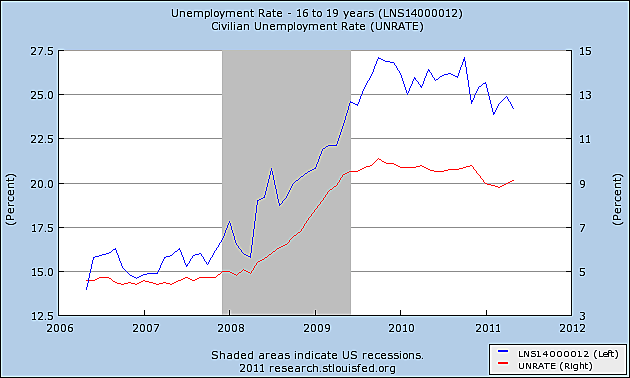I wasn’t in the mood Friday to celebrate the 73rd birthday of the federal minimum wage, created under the Fair Labor Standards Act of 1938. Looking at youth unemployment numbers can be a little depressing. Those figures should, however, sober up anyone who is still drunk under the spell of thinking the minimum wage has no impact on unemployment.
The chart above shows the increase in unemployment overall (right axis) and the unemployment rate for workers age 16 to 19 (left axis). The difference between these two numbers usually runs about 10 percent, even in good times. Notice that when the minimum wage was raised in July 2009, overall unemployment had started to level off, while youth unemployment sky-rocketed. We also witnessed a big spike in youth unemployment the last time the minimum wage was raised in July 2008.
For those who truly care about reducing unemployment, as I do, the first thing we can do is recognize that a large part of the problem is being driven by the massive spike in youth unemployment, which the data suggests is partly being driven by the minimum wage.
For a great review of the historical evidence, I suggest David Neumark’s book Minimum Wages. And yes, I’ve read David Card’s studies, which I think have tons of problems, but that is beyond the discussion here. The bottom line should be that in a free society, whatever two consenting individuals agree to, should be respected, whether its marriage or the contours of a labor contract.

